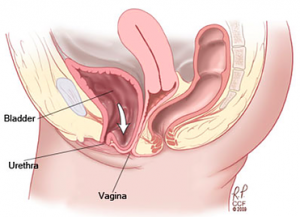What is Pelvic Organ Prolapse?
Prolapse occurs when a pelvic organ drops slightly from its normal place in your lower belly and pushes against the walls of your vagina. This can happen when the soft tissue holding the organs becomes stretched and or muscles that support the pelvic organs, the “pelvic floor muscles” become weak.
What causes Pelvic Organ Prolapse?
Pelvic muscles and connective tissues which have been weakened with age or childbirth are the primary cause, but many other factors may play a role. These may include pregnancy, previous surgeries, menopause, smoking, diabetes, obesity, repeated heavy lifting, chronic coughing and chronic constipation.
Symptoms of Prolapse

A feeling of vaginal fullness or heaviness

Something “coming down”

Pain or discomfort during intercourse

Loss of bladder and/or bowel control

Involuntary urination or inconsistent urinary stream

Difficulty with bowel movements

Recurrent urinary or bladder infections
Physio for Prolapse
Current research shows that Physiotherapy can significantly reduce the symptoms caused by prolapse. It should be the first line of treatment when the prolapse is mild or moderate.
An in-depth assessment is the first step in Physiotherapy. This will involve taking a detailed history and then if appropriate and with consent an internal examination to fully understanding the presenting problem and assess the function of the pelvic floor muscles. This part of the assessment is helpful but not essential and your therapist will discuss this with you during your first appointment.
Once a diagnosis has been made the physiotherapist will tailor a treatment plan to your needs.
This may involve one or more of the following:

Education on bladder and bowel habits

Pelvic Floor Rehabilitation

Breathing techniques

Abdominal muscle strengthening

Onward referral for further investigation






